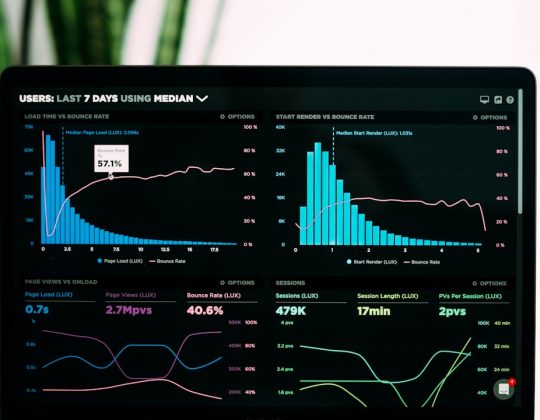In today’s fast-paced, data-driven market, companies need to be synchronized across all stages of the customer journey. This is especially critical for revenue-generating functions, where marketing, sales, customer success, and finance must operate as integrated units rather than siloed departments. That’s where Revenue Operations (RevOps) comes into play, offering a holistic strategy to drive predictable growth through alignment, visibility, and operational efficiency.
One of the most essential aspects of a successful RevOps implementation is aligning your Customer Relationship Management (CRM), Marketing Automation Platform (MAP), and Billing Systems. While each of these tools is powerful in its own right, the real magic happens when they work in harmony, enabling businesses to nurture leads, close deals, and recognize revenue seamlessly.
What Is RevOps and Why Should You Care?
RevOps is a business function that aims to break down barriers between traditionally siloed departments — specifically marketing, sales, and customer success — to align them around a common set of goals and metrics. Unlike traditional organizational models, RevOps prioritizes unified processes, shared data, and streamlined technology stacks to improve revenue predictability and accelerate growth.
According to research from B2B consultancy Forrester, companies with strong RevOps alignment have seen:
- 36% faster growth
- 38% higher sales win rates
- 28% greater profit margins
These statistics highlight why aligning core systems like CRM, MAP, and Billing is so critical to success in modern revenue operations.
The Importance of System Alignment in RevOps
One of the biggest challenges for today’s organizations is achieving operational alignment. Often, this boils down to technology systems that don’t integrate well — which leads to data silos, manual workarounds, and disjointed customer experiences. When your CRM, MAP, and Billing systems are unified, you create a streamlined, end-to-end revenue workflow that supports both efficiency and strategic decision-making.
The benefits of system alignment include:
- Improved data accuracy – Avoid inconsistencies and duplicates by ensuring all customer data lives in a unified ecosystem.
- Shorter sales cycles – Automatically pass leads between departments and tools, accelerating handoffs between marketing, sales, and finance.
- Enhanced reporting and forecasting – Aggregate data from lead generation all the way to revenue recognition for more accurate insights.
- Better customer experience – Map the customer journey consistently across all touchpoints, from engagement to payment.

CRM: The System of Record for Sales
The CRM is often seen as the cornerstone of the revenue engine. It holds essential data on leads, prospects, and customers, serving as the primary workspace for sales teams. CRMs like Salesforce, HubSpot, and Microsoft Dynamics allow users to track interactions, manage pipelines, and forecast revenue. However, if not integrated properly into your RevOps technology stack, CRMs can become glorified databases rather than dynamic tools that support growth.
Key integration points with CRM systems include:
- Automatic lead creation and scoring from the MAP
- Real-time sync with billing records to understand deal statuses
- Triggering workflows based on invoice payment status or subscription renewal periods
Marketing Automation Platform: Fueling Lead Generation
Marketing Automation Platforms like Marketo, HubSpot, Pardot, and ActiveCampaign bring scale and precision to marketing campaigns. They allow teams to segment audiences, personalize content, and trigger workflows based on behavioral data. However, their power is significantly amplified when connected to your CRM and billing systems.
MAP integration enhances:
- Lead nurturing campaigns that adapt based on billing or CRM changes
- Closed-loop reporting to better attribute marketing programs to revenue
- Improved lead scoring models that incorporate customer lifecycle and payment data

Billing Systems: Where Revenue Becomes Reality
The Billing system is what turns potential into profit. This is the cornerstone of financial accuracy and operational accountability. Tools like Zuora, Stripe, QuickBooks, or Chargebee handle invoice generation, payment tracking, revenue recognition, and subscription management. Unfortunately, billing is often overlooked in early RevOps conversations — even though it plays a vital role in revenue continuity and customer satisfaction.
When billing systems are aligned with CRM and MAP tools, finance and operations benefit from real-time visibility into the customer lifecycle while marketing and sales can proactively manage renewals and upsell opportunities. In subscription models, this alignment is especially critical to maintaining revenue predictability.
Building a Unified Tech Stack
While aligning CRM, MAP, and Billing doesn’t necessarily require replacing your current solutions, it does require thoughtful integration — often through APIs, middleware, or native connectors. The key is to ensure bi-directional data flow, maintain data integrity, and establish clear ownership of processes across teams.
Follow these steps to begin aligning your revenue tech stack:
- Map the Customer Journey – Outline your end-to-end customer lifecycle. Identify when and how each tool is used and what data is critical at each stage.
- Centralize Data Governance – Establish standards around how data is captured, labeled, and shared across platforms. Create a single source of truth for customer intelligence.
- Automate Handoffs – Replace manual transitions (e.g., marketing handing leads to sales) with automated triggers and alerts.
- Establish Cross-functional KPIs – Build performance metrics that align marketing, sales, and finance teams around shared goals like customer acquisition cost (CAC), customer lifetime value (CLV), and churn rate.
- Review and Optimize Quarterly – Treat RevOps as its own function with regular assessments. Evaluate integrations, adapt processes, and scale what works.
Common Pitfalls to Avoid
As promising as RevOps integration is, there are several challenges that can hinder alignment:
- Overcomplicating the Tech Stack – Adding too many tools can create redundancy and confusion. Focus on depth of integration over quantity of systems.
- Neglecting Training and Enablement – Teams need to understand how the new system alignment impacts their daily workflows.
- Skipping Strong Data Hygiene – Clean, consistent data management is crucial. Poor data leads to misinformation and failed automation efforts.
By proactively addressing these issues, organizations can ease the transition to a fully aligned RevOps model and maximize the value of their technology investments.
The Role of Leadership in Driving RevOps Success
Establishing effective RevOps practices requires more than just good software and clean integrations — it also necessitates cultural change. Leadership must champion this change by emphasizing the importance of cross-functional collaboration and shared accountability.
Executive support ensures that teams don’t revert to old behaviors and that operational alignment becomes embedded in company DNA. Appointing a dedicated RevOps leader or team is a smart move that can accelerate adoption and improve execution.

Looking Ahead: Scaling RevOps for Growth
As your organization grows, maintaining and scaling your CRM, MAP, and Billing alignment becomes even more crucial. A unified RevOps approach not only supports scalability but ensures that no aspect of the revenue cycle is left behind. From testing new acquisition campaigns to launching new pricing models, your technology and teams must be agile, data-informed, and coordinated.
In conclusion, aligning your CRM, Marketing Automation Platform, and Billing systems within a RevOps framework is no longer optional — it’s a business imperative. With proper integration, shared KPIs, and organizational buy-in, businesses can unlock new levels of efficiency, visibility, and revenue growth.
Now is the time to invest in your RevOps foundation and turn streamlined operations into sustainable success.







